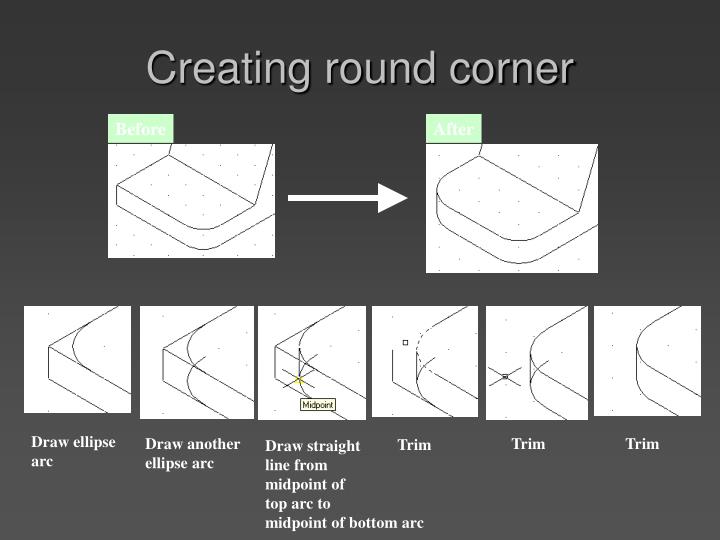
Then, it was just a matter of adding cylinders, centering them in the ring, and rotating them into position. That way, the thickness of the plane that needed rounding is uniformely the thickness of the ring. VerticalOffset = tan(gapAngle / 2) * ringRadius I decided I'd simplify that and take out an extruded triangle. I was using difference to take a rectangle out of the ring. Just be prepared for simple parts to take hours to render and run your system out of memory.I ended up taking a third option I suppose. Using similar tricks, you can get whatever automatic fillets or chamfers you want. Slow as balls, and the accuracy depends a lot on the number of vertices you give your sphere (which affects the speed), but it works. Finally, take E and run minkowksi again with sphere of radius R to return your part to the original size, but with rounded corners. The idea is that along with the list of coordinates that you would normally pass to polygon (), a list of radii is also given and they are used to round the corners at each of the coordinates. Hull is very useful, you can do 100ds of hull commands instead of an extrusion for complex stuff for example. Just sharing a tool that I think is pretty useful for rounding the points on a polygon. If you merge a sphere with a cube, it will also round the long tube zone and make it pregnant. minkowski between the cylinder and the rounded tube. Click to find the best Results for openscad rounded cube by Models for your 3D Printer. A-D gives E, which is your original part, but slightly smaller. You can use that to round your cylinder with minkowski. Now take C and do minkowksi with another sphere of some radius R you're interested in (D). You've effectively created a surface from your object. Subtract A from B to provide C, a hollow shell marginally larger than your original. Then take minkowksi with small sphere (B). I use it professionally, however.īasically, I abuse minkowksi and a really tiny sphere to fake it. I created my own, slow, imperfect functions for that in openscad. And, yes, I know reimporting back into OpenSCAD is worrisome with the huge point clouds instead if the original Script used to create the object. Since adding Fillets and Chamfers is generally best done last, well, in FreeCAD it is, it seems like a no-brainer to export to CSG and clean up in FreeCAD. I was able to instantly add Fillets and Chamfers.ĭoing some searching here and generally on-line I kept finding a lot of whining about the Fillet/Chamfer issues, but not a single mention of FreeCAD and the CSG format. I originally modeled it in FreeCAD and it was easy to round the edges of the clamp with a fillet and that makes it a little easier to get the light in and out of the mount.

Opened FreeCAD and viola, in came the bearing.

I hastily threw together a bearing in OpenSCAD and Exported it to "bearing.csg" I am lazy so the less I have to do when the print has finished, the better.Ĭhecking through FreeCAD (which generally sucks because it is so buggy) but does Fillets and Chamfers like a whiz, I saw "Open OpenSCAD. OpenSCAD uses three library locations, the installation library, built-in library, and user-defined libraries. A script in the OpenSCAD language is used to create 2D or 3D models. But, using OpenSCAD for developing 3D prints, Fillets and Chamfers are mandatory unless you like a lot of hand-cleaning up after printing. Delta specifies the distance of the new outline from the original outline. OpenSCAD is a 2D/3D and solid modeling program that is based on a Functional programming language used to create models that are previewed on the screen, and rendered into 3D mesh which allows the model to be exported in a variety of 2D/3D file formats. Yes, I know about the libraries and Manowiz rounding, or whatever it is. As newbie to OpenSCAD I have been alarmed at the lack of simple Fillets and Chamfers.


 0 kommentar(er)
0 kommentar(er)
